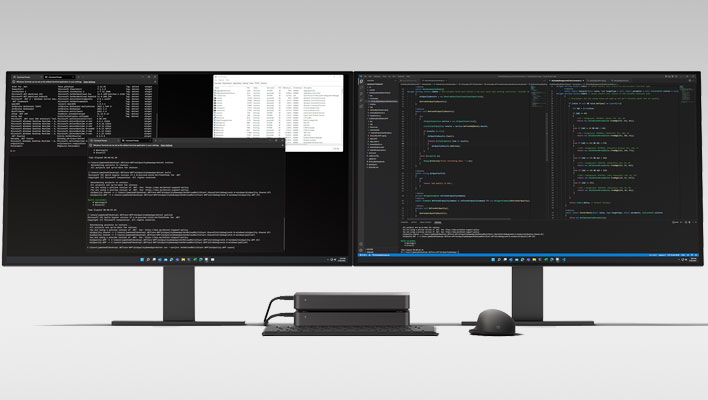Microsoft Unveils Snapdragon Powered Project Volterra Mini PC For AI Developers

Microsoft's Build 2022 event is underway, and while there have not been any surprise consumer hardware launches (not yet, anyway) like a tri-folding Surface or anything of that nature, the company did announce something special for developers. Called Project Volterra, it's a mini PC and development platform designed to help developers code artificial intelligence (AI) applications.
We don't get a full list of specs and features, though Microsoft did reveal that it's an Arm-powered device running on Qualcomm's Snapdragon compute platform (whether that's a Snadragon 8cx Gen 3 or something else, we don't know yet). It also features a neural processing unit (NPU) and Qualcomm's new Neural Processing SDK for Windows toolkit.
"We believe in an open hardware ecosystem for Windows giving you more flexibility and more options as well as the ability to support a wide range of scenarios.
As such, we are always evolving the platform to support new and emerging hardware platforms and technologies, such as GPUs that render an app’s user experiences, Wi-Fi and cellular chipsets that ensure devices are always connected, and CPUs including MIPS, x86, Alpha, Itanium, and x64," Microsoft's Panos Panay stated in a blog post.
The general idea is to make it easier for developers to build cloud native AI applications. To that end, Microsoft is also releasing a bunch of software tools for Arm, such as Visual Studio 2022 and VSCode, Visual C++, Modern .NET 6 and Java, Classic .NET framework, Windows Terminal, and WSL and WSA for running Linux and Android apps. The first preview of these tools will be available in the next few weeks.
"We’re also hard at work helping many open-source projects natively target Arm including Python, node, git, LLVM, and more," Panay says.
As to the hardware, Project Volterra looks like a Mac mini and is made from recycled ocean plastic. Microsoft didn't reveal a full list of specifications, but with regards to I/O, there are three USB Type-A ports, two USB Type C ports, a DisplayPort, and an Ethernet port.

